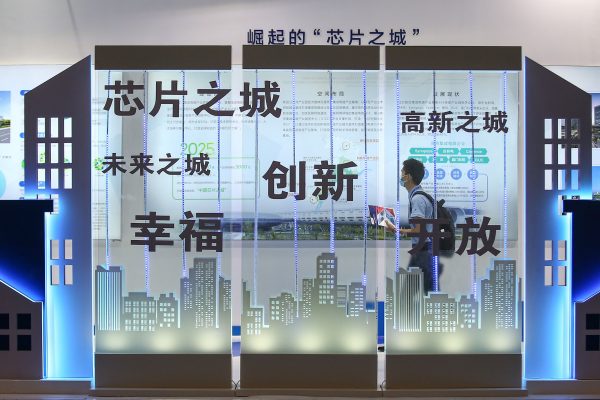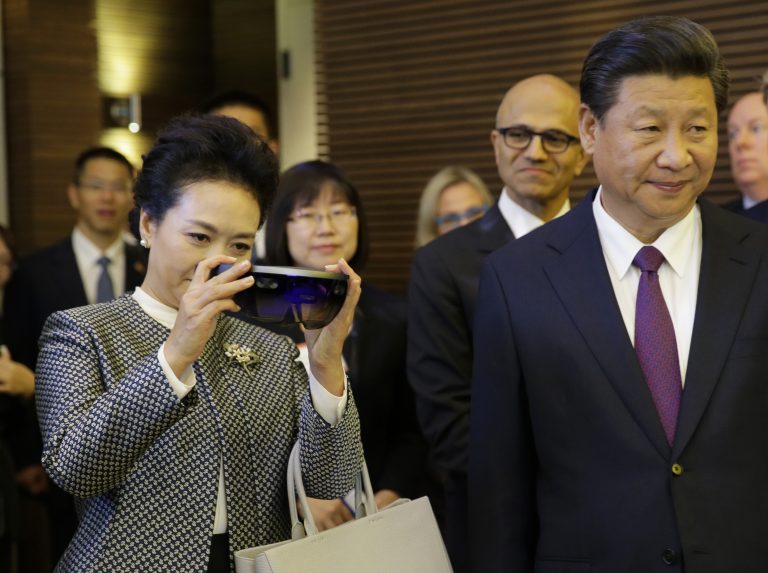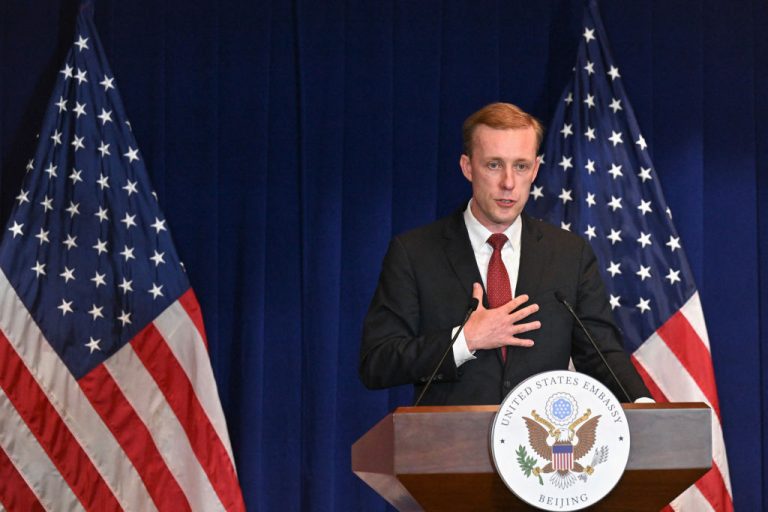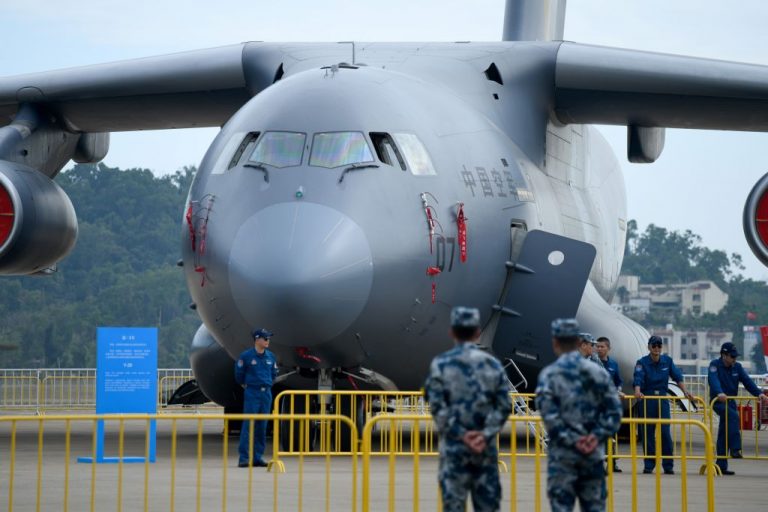During a group study session of the Politburo on Jan. 31, Chinese Communist Party (CCP) general secretary Xi Jinping called for “accelerating the establishment of a new development pattern.” This, he clarified, was necessary to “break through blockages” and address “stuck points and vulnerabilities in supply-side constraints.”
Xi added that it was “imperative” for the CCP regime to “move faster toward self-reliance in science and technology so as to relieve the stranglehold some countries have tightened on China’s development of core technologies.”
The Chinese leader’s remarks follow recent efforts by the United States to block the People’s Republic of China’s (PRC) access to American technology and counter China. Washington’s “tech war” piles up pressure against Xi and the CCP at a time of escalating crises for the regime.
Tightening curbs
On Jan. 27, the Netherlands and Japan joined the U.S. in restricting exports of advanced semiconductor technology and machinery to China, according to various news reports. The countries did not make a public announcement due to the “sensitivity” of the move.
Per news reports, the China tech restrictions could only be implemented months later as the countries finalize legal arrangements. As part of the agreement, the Netherlands will expand restrictions on ASML Holding NV to prevent it from selling to China some of its deep ultraviolet lithography machines used to manufacture advanced chips, while Japan will impose similar limits on Nikon Corp, according to the media.
Success
You are now signed up for our newsletter
Success
Check your email to complete sign up
Meanwhile, the Financial Times reported on Jan. 30 that the Biden administration told some U.S. companies that licenses permitting them to export American technology to Huawei would no longer be issued. The U.S. government had earlier granted export licenses to some companies like Intel and Qualcomm after the Trump administration added Huawei to the “entity list” in 2019.
READ MORE
- Xi’s Credibility Nosedives as CCP Loses Control Over Pandemic in China
- Pelosi’s Taiwan Visit Sharpens Tensions at a Bad Time for Beijing
- China’s ‘Strategic Partnership’ With Russia Is a Growing Liability for Xi

Bloomberg further reported that the Biden administration is looking to ban all U.S. suppliers from selling to Huawei. The administration is also considering banning exports to other companies and intermediaries who then supply Huawei, a person familiar with matters told The Wall Street Journal.
Washington appears to have bigger plans than just cutting off Huawei from American technology. House Foreign Affairs Chair Rep. Michael McCaul (R-TX) told Politico that he learned from conversations that the Biden administration is mulling a total ban on U.S. investments in certain high-tech areas of China’s economy.
The administration “is talking about a theory where they would stop capital flows into sectors of the economy like AI, quantum, cyber, 5G, and, of course, advanced semiconductors — all those things. They actually want to say, right, you can’t invest in any [Chinese] company that does AI. You can’t invest in any company that does cyber” or other similar sectors, McCaul said.
Meanwhile, the U.S. moved forward with an existing strategic technology partnership with India. On Jan. 31, U.S. National Security Advisor Jake Sullivan and his Indian counterpart Ajit Doval met in DC to discuss cooperation in a number of areas, including semiconductors, artificial intelligence, quantum computing, and 5G wireless networks.
A senior U.S. official said that both countries would ask semiconductor associations in their respective nations to collaborate in picking out areas for joint investment. The official added that the Biden administration would work with Congress to remove regulatory hurdles that prevent the export of high-performance computing technology to India.
Troubling impact
Washington’s tech moves serve to safeguard America’s national security, strengthen ties with other countries to counter China in the Indo-Pacific, maintain U.S. tech dominance, and cripple Beijing’s tech ambitions. The last point is most pressing for Xi Jinping and the CCP, and is likely what Xi is alluding to when he spoke about the “stranglehold” that “some countries” have tightened on the regime’s development of core technologies at the recent Politburo study session.
The expansion of the Biden administration’s export controls to China seriously stymies the CCP regime’s efforts to develop and possess its own AI and advanced semiconductors. A complete ban of U.S. investments in high-tech areas of China’s economy would further compound the CCP’s problems. If the CCP cannot find a way to “break the blockade,” then the PRC’s AI, super computing, and advanced semiconductor industries would essentially be strangled in the crib. This greatly curbs the CCP regime’s ability to threaten U.S. tech dominance and displace America as the global hegemon.

The potential blocking of sales of American technology to Huawei could be catastrophic for the company in particular and the PRC’s tech industry in general. Huawei already appears to have run out of advanced in-house-designed semiconductors for its smartphones in the third quarter of 2022, and will struggle to procure more chips under tightened U.S. sanctions.
Meanwhile, China only produces about 15 percent of the global chip output while consuming more than 75 percent of semiconductors sold globally. Worse, China’s equipment manufacturers are four to five years behind their global counterparts and cannot immediately replace the equipment produced by U.S. suppliers, according to experts. The PRC could find itself relying on legacy semiconductor designs and producing equipment that do not require the latest technologies for a very long time if it cannot address the “stuck points and vulnerabilities in supply-side constraints.”
The U.S. tech sanctions, however, are unlikely to cut off China completely from acquiring advanced technologies. Chip industry group chip SEMI warned that export curbs by the U.S., Japan, the Netherlands, and other allies would be “largely ineffective” provided that international partners agree to broader controls on Chinese fabrication facilities (“fabs”) that produce advanced chips. SEMI further cautioned that the U.S. and its allies must prevent their engineers and others from backing Chinese high-end fabs. The Wall Street Journal also noted that China’s top nuclear-weapons research institute managed to obtain chips made by U.S. companies such as Intel and NVIDIA since 2020 despite being placed on a U.S. export blacklist in 1997.
Given its past behavior, the CCP can still be expected to get its hands on advanced semiconductors and critical technologies by making purchases using overseas shell companies, resorting to industrial espionage, and coming up with other “creative” means to evade U.S. sanctions. However, such means are likely to have a poor cost-benefit ratio and the CCP will be limited in the quantity of chips and equipment it can access.
Rock and hard place
The CCP authorities have accused Washington of embarking on “blatant technological hegemony” in responding to reports that America could block Huawei from access to all U.S. suppliers. PRC foreign minister Qin Gang also lobbied his Dutch counterpart to defend free trade and “maintain the stability of the international industrial chain and supply chain” after news broke that the Netherlands and Japan had agreed to cooperate with the U.S. in restricting China’s access to advanced semiconductor technology.

Beijing’s remonstrations, however, lacked their usual “wolf warrior” edge. This is partly in line with the Xi leadership’s effort to rebuild diplomatic relations with countries after the 20th Party Congress to attract investments to China and lower geopolitical pressure on the CCP regime. Beijing also probably weighed that sounding aggressive and belligerent in the face of tightening U.S. restrictions would only make matters worse should Washington cite such behavior as a reason to accelerate its “tech war” against China.
The Xi leadership’s attempt at a “moderate” approach may not buy it reprieve from U.S. pressure. With an expected escalation in the Russia-Ukraine conflict in the first half of the year, the Biden administration has incentive to get tough on China and compel the PRC to stop supporting the Russian war effort, distance itself from Moscow, and align with the international community instead of persisting with “revisionist” stances on Ukraine and Taiwan. Washington is likely also looking to contain the CCP threat over the long term and check the CCP’s domination agenda.
Xi Jinping and the CCP might be able to convince the U.S. to break its “stranglehold” over technology by demonstrating a willingness to walk in lockstep with the rules-based international order and abandon the PRC’s “revisionism.” However, doing so will greatly erode Xi’s personal “quan wei” (authority and prestige), leaving him vulnerable to serious intra-Party pushback.
On the other hand, the PRC sticking with its current course will only invite the U.S. and its allies to ratchet up pressure to intolerable levels. All in all, Xi has no good options and will see rising political risk levels as the CCP regime’s internal and external crises mount.
Larry Ong is a senior analyst with New York-based political risk consultancy SinoInsider. He was part of the SinoInsider team that forecasted personnel reshuffles at the 19th and 20th Chinese Communist Party congresses with a high degree of accuracy.







